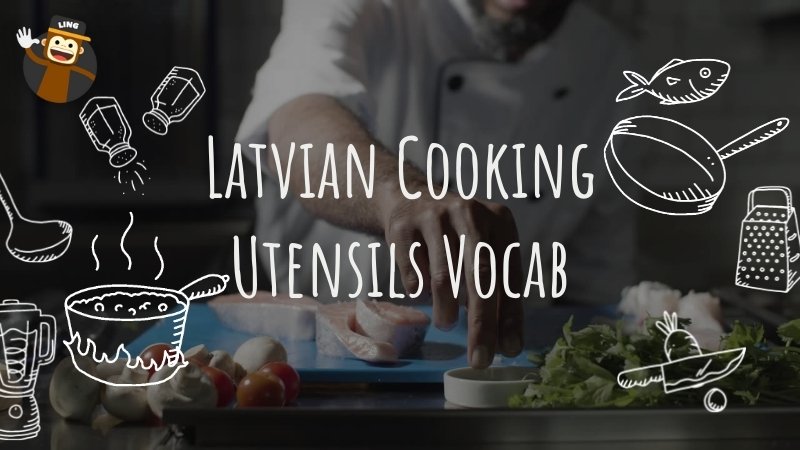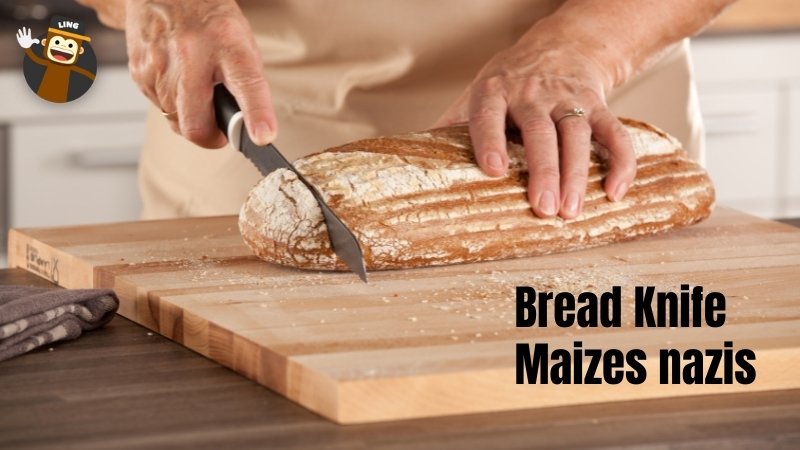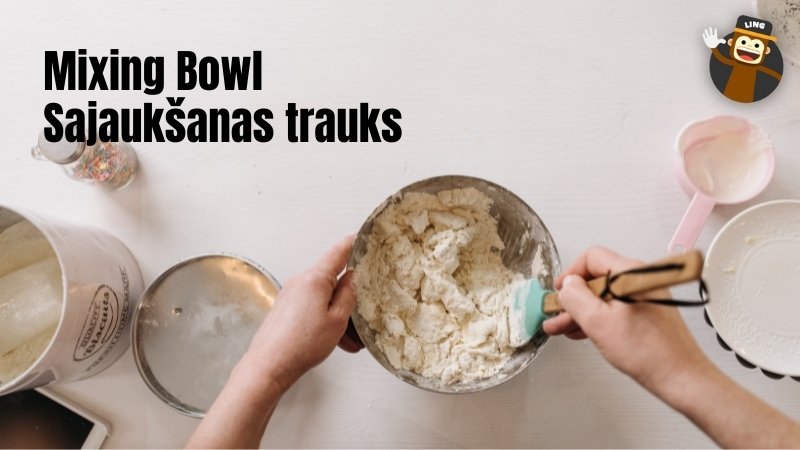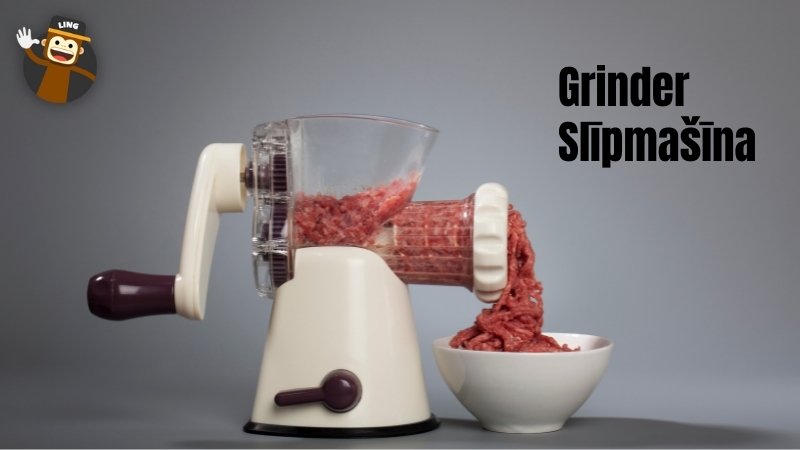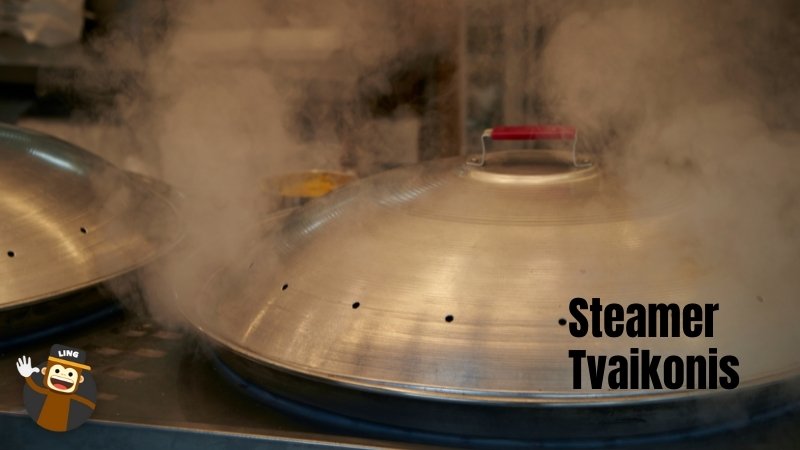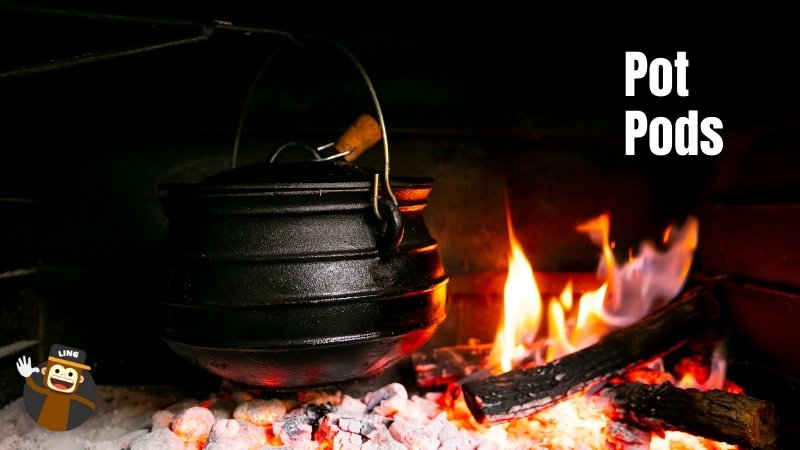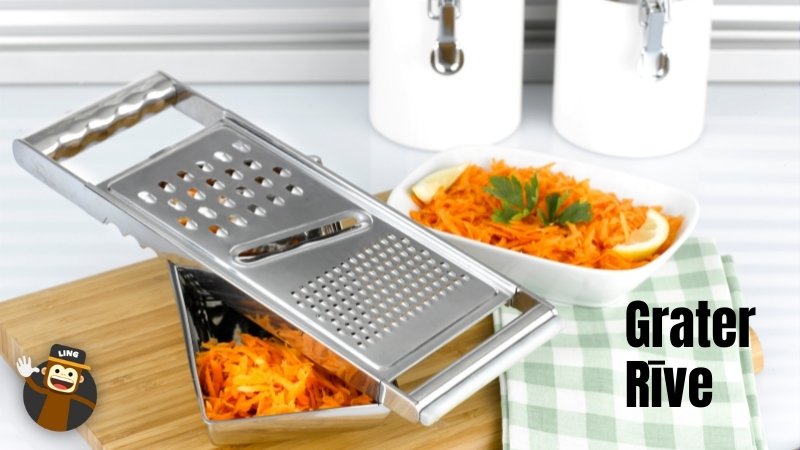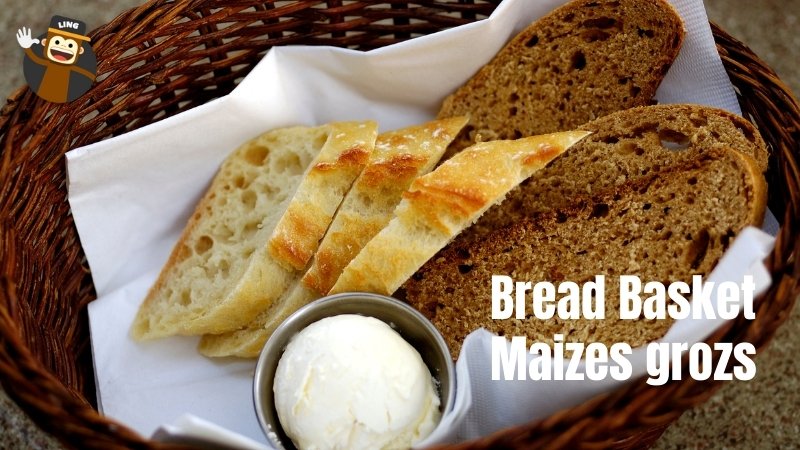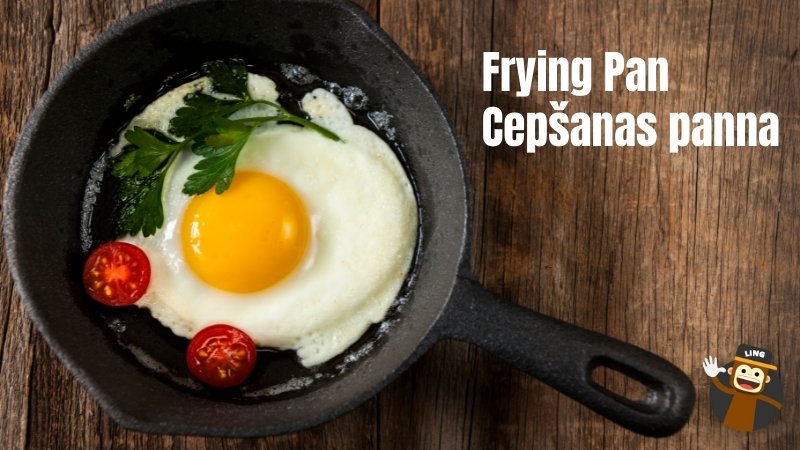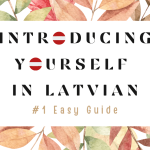Are you looking to impress locals with your kulinārijas or culinary skills? Learn the basic words for Latvian cooking utensils and say them out loud when talking about food. After all, food is always a great topic to begin with when interacting with foreigners. It is so mysterious in the sense that it has a unique way of making people feel closer to one another. Perhaps, one of the reasons behind this is that food can be viewed as a universal language. Are you interested to learn more? Let’s get started!
Cooking Culture In Latvia
Hold on! Before we get into utensils and kitchen tools, let us get a brief idea about Latvian cuisine and food tradition for a more enlightening learning experience.
Although unique, Latvian cuisine has similarities with the food of Lithuania, Russia, and Poland. That means the main platter always consists of eggs and grains like barley, wheat, and oats. In the 19th century, as potato farming started to spread from the North American hemisphere, Latvians quickly understood its usefulness. They inherited similar technologies to start potato farms, which is why most Latvian meals almost always include boiled potatoes (usually served with cottage cheese as an excellent add-on).
However, with agricultural rise and development, Latvian cuisine started including new ingredients such as beef, pork, and other meat options that could make a non-vegetarian customer quite happy. Thus, today, Latvian dishes are full of savory and sweet food items that one can never get enough of!
When it comes to cooking, it is also essential to realize the traditionally used equipment. In the case of the Latvian kitchen, every local will agree that can openers, egg rings, food pans, and food scoops are some basic range of kitchen utensils regularly used. Even other utensils such as juicers, fryer baskets, food scales, and food portioners come in handy while cooking most Latvian dishes. Since most meal consists of soups and bread, knives and scoops are quite religiously available.
Best Latvian Dishes To Try Out!
Since we are already talking about food cuisine and tools, here is a list of the best Latvian dishes to try out if you ever plan to visit a Latvian restaurant. Advertising the best dishes is only fair for your eager soul, waiting to explore!
- Beetroot Soup/ Aukstā Zupa
- Grey Peas and Bacon/ Pelēkie Zirņi Ar Speķi
- Latvian Smoked Fish/ Kūpinātas zivis
- Rye Bread/ Rupjmaize
- Latvian Dumplings/ Pelmeni
- Pearl Barley Risotto/ Pērļu miežu risotto
- Riga Black Balsam (traditional Latvian herbal liqueur)
- Kvass (Beverage)
- Latvian Potato Pancakes/ Kartupeļu Pankūkas
- Minced Meat Patty/ Kotletes
- Blood Sausage/ Putraimdesas
Common Latvian Cooking Utensils
Coming to the central part of the blog, we will discover some traditional Latvian kitchen utensils vocab with proper translation. Knowing these will enhance your speaking skills and also improve your Latvian vocabulary. So, if you are ready to learn, let’s dive right into it!
-
Maizes nazis (Bread Knife)
Since we already learned that rye bread is an authentic item of Latvia, bread knives or Maizes nazis are one crucial kitchen tool that a Latvian family cannot miss out on. Several business sectors produce different variety of knives with extraordinary designs.
-
Sajaukšanas trauks (Mixing Bowl)
Sajaukšanas trauks is another essential utensil needed to make delicious Latvian dishes. Especially when it comes to cold soups like pink beetroot soup, mixing bowls come in handy while combining the various ingredients.
Tip: Make sure you taste the cold soup in Latvia, as we are confident you will love it!
-
Slīpmašīna (Grinder)
How can one possibly make lavish Latvian Pelmeni without a Slīpmašīna? A grinder is usually used for mincing meat and vegetables. Thus, a grinder is required in the kitchen for mincing pork and beef for making dumplings or minced meat patty.
-
Tvaikonis (Steamer)
Steamer or Tvaikonis is another essential utensil that Latvians need regularly. A steamer is mainly used for cooking boiled items like boiled eggs, potatoes, beans, etc.; as we have already noted, Latvians love dumplings and potatoes boiled with cottage cheese, so one cannot think of not having a Tvaikonis.
-
Pods (Pots)
Pods are kitchen products that help Latvian cooks make stews and soups. Since beetroot soup or other cold soups are traditional dishes in Latvia, pots are regular utensils in every household.
-
Rīve (Grater)
Do you love cheese? So do Latvians. Many dishes have grated cheese as their toppings. Thus, a grater helps a cook to grate cheese or even vegetables and fruits to put into the various kinds of fried pork chops and soups.
-
Maizes grozs (Bread Basket)
If you go to a Latvian restaurant or household, you will see beautiful bread baskets used to serve savory bread dishes. Since rye bread and sourdough bread are eaten traditionally by Latvians, Maizes grozs have a major role in the table.
-
Cepšanas panna (Frying Pan)
Did you know bacon, fried lampreys, and pork chop are some favorite dishes of locals in Latvia? The locals love to eat fried dishes apart from their regular soups. Thus, a Cepšanas panna plays a significant part in cooking such savory food.
50+ Additional Latvian Kitchen Utensils Vocab
Here is a list of more utensils like storage and cooking equipment that we always find in our kitchen in the Latvian language.
- Blender- Blenderis
- Breadbox- Maizes kaste
- Bowl- Bļoda
- Bottle opener- Pudeļu attaisāmais
- Cutting board- Virtuves dēlis
- Carving knife- Griešanas nazis
- Colander- Caurduris
- Cooker- Pavārs
- Chopsticks- Irbulīši
- Corkscrew- Korķviļķis
- Can opener- Konservu attaisāmais
- Cups- Krūzes
- Cutlery- Galda piederumi
- Container- Konteiners
- Egg rings- Olu gredzeni
- Egg beater- Olu putotājs
- Fork- Dakša
- Fruit bowl- Augļu bļoda
- Food scale- Pārtikas skala
- Food thermometer- Pārtikas termometrs
- Funnel- Piltuve
- Garlic press- Ķiploku spiede
- Glass- Stikls
- Honey pot- Medus pods
- Icing bag- Apledojuma maisiņš
- Juicer- Sulu spiede
- Jug- Krūze
- Jar- Jar
- Kettle- Tējkanna
- Kitchen foil- Virtuves folija
- Kitchen scissors- Virtuves šķēres
- Ladle- Kauss
- Measuring cups- Mērglāzes
- Nutcracker- Riekstkodis
- Oven mitt- Cepeškrāsns dūrainis
- Peeler- Mizotājs
- Pastry cutter- Konditorejas griezējs
- Poacher- Malumednieks
- Plate- Plāksne
- Pot holders- Podu turētāji
- Rolling pin- Rulīša tapa
- Roasting tin- Cepšanas forma
- Sauce pan- Mērces panna
- Skewer- Iesms
- Spatulas- Lāpstiņas
- Spoons- Karotes
- Scooper- Liekšķere
- Salad bowl- Salātu bļoda
- Skillet- Kastrolis
- Shakers- Šeikeri
- Toaster- Tosteris
- Tongs- Knaibles
- Teapot- Tējkanna
- Wok- Wok
- Whisk broom- Noslaucīt slotu
- Zester- Zesters
Latvian Cooking Phrases To Know
Now that you know almost all the kitchen utensils words in the Latvian language, let us move on and get in touch with some example phrases of different kitchen utensils.
Only knowing the words will not suffice. If you want to become a fluent speaker and know more about the language and culture, it is important to use them practically in sentences and phrases like locals usually do. To help you out, the table below will give an account of all the common phrases one regularly uses while cooking.
- Cut the break with the knife/ Izgrieziet pārtraukumu ar nazi
- Can you use the frying pan to make omelets?/ Vai varat izmantot pannu omlešu pagatavošanai?
- We cook rice in the pressure cooker/ Rīsus vāram spiediena katlā
- Keep the cookies in the container/ Glabājiet cepumus traukā
- Use the mixing bowl for the salad/ Salātiem izmantojiet maisīšanas trauku
- Do you have a cutting board to chop vegetables?/ Vai jums ir griešanas dēlis dārzeņu griešanai?
- The spatula is hot/ Lāpstiņa ir karsta
- We need a grinder for the meat/ Mums vajag dzirnaviņas gaļai
- I love to eat noodles with chopsticks/ Man patīk ēst nūdeles ar irbulīšiem
- The salad bowl is ready/ Salātu bļoda ir gatava
- A toaster is really helpful/ Tosteris ir patiešām noderīgs
- Can I use the juicer for the lemonade?/ Vai es varu izmantot sulu spiedi limonādei?
- Be careful with the carving knife/ Esiet uzmanīgi ar griešanas nazi
- Always keep the pot holder ready/ Vienmēr turiet gatavu katlu turētāju
- Do you want a fork?/ Vai vēlaties dakšiņu?
Wrapping Up!
Well, if you have read all the kitchen utensils’ words and phrases mentioned above, you have successfully passed one stage of your language learning journey! No language is easy to learn. But words like Šeikeri, Tējkanna, Blenderis, etc., are stepping stones that will give you an eye-opening experience. However, this is not the end of your language learning journey. You must learn more word translations, native-sounding expressions, and language tips to keep improving. For that, you don’t have to go after an unnecessary spam site with multiple ads. All you need is the Ling App!
Learn Latvian With Ling
The Ling App is the best language-learning resource for beginners since it has all the lessons for topics such as flavors, sports, music, and even culture. To access more amazing resources, immediately click the download button, which is available on Appstore and Playstore! Basically, the app is filled with content curated by expert writers and real native speakers to help you express yourself better and gain the confidence you’ll need. To do this, the developers added tons of features that will ensure the retention of learned lessons for over 60+ languages. So, what are you waiting for? Download Ling and start learning the Latvian language today!
